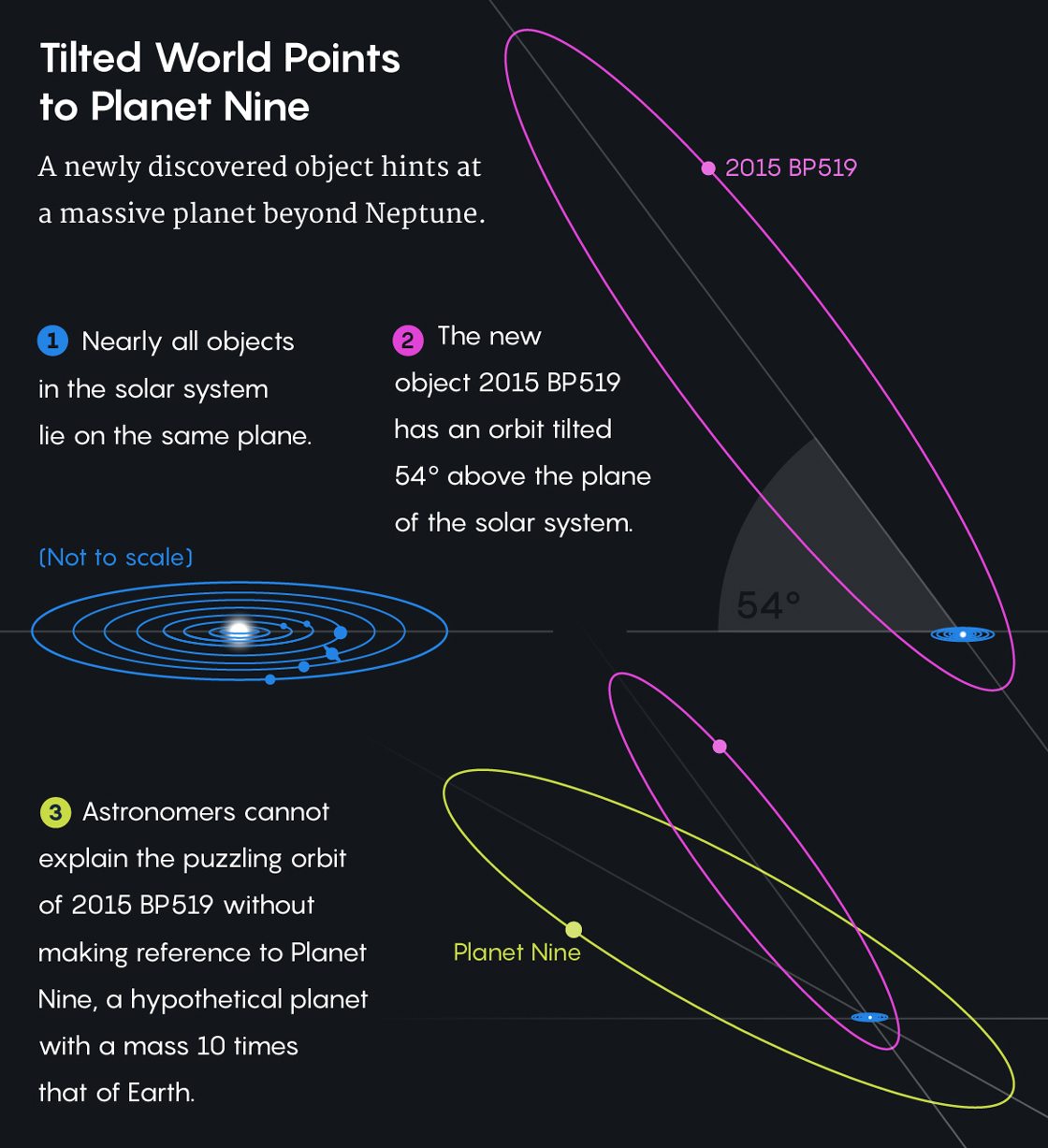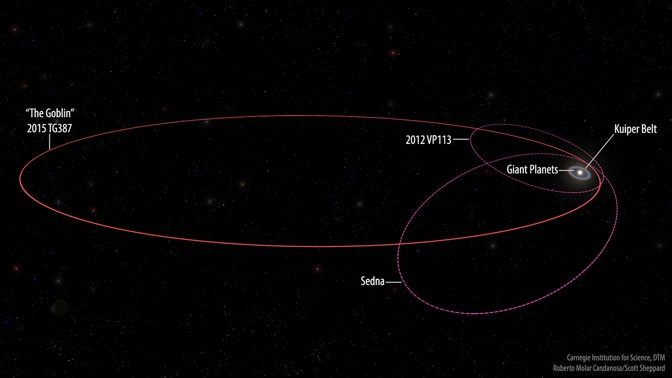Winston
Lorenzo von Matterhorn
- Joined
- Jan 31, 2009
- Messages
- 9,560
- Reaction score
- 1,748
Planet Nine
https://en.wikipedia.org/wiki/Planet_Nine
"Planet Nine is a hypothetical large planet in the far outer Solar System, the gravitational effects of which would explain the improbable orbital configuration of a group of trans-Neptunian objects (TNOs) that orbit mostly beyond the Kuiper belt.
The predicted planet would be a super-Earth, with an estimated mass of 10 Earths (approximately 5,000 times the mass of Pluto), a diameter two to four times that of Earth, and a highly elliptical orbit with an orbital period of approximately 15,000 years."
Theft behind Planet 9 in our solar system
https://phys.org/news/2016-05-theft-planet-solar.html
Through a computer-simulated study, astronomers at Lund University in Sweden show that it is highly likely that the so-called Planet 9 is an exoplanet. This would make it the first exoplanet to be discovered inside our own solar system. The theory is that our sun, in its youth some 4.5 billion years ago, stole Planet 9 from its original star.
An extrasolar planet, or exoplanet, is by definition a planet located outside our solar system. Now it appears that this definition is no longer viable. According to astronomers in Lund, there is a lot to indicate that Planet 9 was captured by the young sun and has been a part of our solar system completely undetected ever since.
"It is almost ironic that while astronomers often find exoplanets hundreds of light years away in other solar systems, there's probably one hiding in our own backyard", says Alexander Mustill, astronomer at Lund University.
Planet Nine is still hypothetical. However:
Gravitational Perturbations and the Prediction of New Planets
In 1846, the planet Neptune was discovered after its existence was predicted because of discrepancies between calculations and data for the planet Uranus. Astronomers found the new planet almost exactly at the position predicted by the calculations of Leverrier (Adams had also calculated the position independently).
Later, similar calculations on supposed perturbations of the orbits of Uranus and Neptune suggested the presence of yet another planet beyond the orbit of Neptune. Eventually, in 1930, a new planet Pluto was discovered, but we now know that the calculations in this case were also in error because of an incorrect assumption about the mass of the new planet. It is now believed that the supposed deviations in the orbits of Neptune and Uranus were errors in measurement because the actual properties of Pluto would not have accounted for the supposed perturbations. Thus, the discovery of Pluto was a kind of accident.
Researcher links mass extinctions to 'Planet X'
March 30, 2016
https://phys.org/news/2016-03-links-mass-extinctions-planet.html
Planet X being Planet Nine. One of the previous theories was that the periodic comet storms that must have taken place to explain the periodic mass extinction impacts, "storms" since the odds of Earth impacts from small numbers are extremely low, were caused by the orbit of the solar system in the galaxy taking it through dust arms which disturbed the Oort Cloud. It looks like the actual cause might be much closer.
https://en.wikipedia.org/wiki/Planet_Nine
"Planet Nine is a hypothetical large planet in the far outer Solar System, the gravitational effects of which would explain the improbable orbital configuration of a group of trans-Neptunian objects (TNOs) that orbit mostly beyond the Kuiper belt.
The predicted planet would be a super-Earth, with an estimated mass of 10 Earths (approximately 5,000 times the mass of Pluto), a diameter two to four times that of Earth, and a highly elliptical orbit with an orbital period of approximately 15,000 years."
Theft behind Planet 9 in our solar system
https://phys.org/news/2016-05-theft-planet-solar.html
Through a computer-simulated study, astronomers at Lund University in Sweden show that it is highly likely that the so-called Planet 9 is an exoplanet. This would make it the first exoplanet to be discovered inside our own solar system. The theory is that our sun, in its youth some 4.5 billion years ago, stole Planet 9 from its original star.
An extrasolar planet, or exoplanet, is by definition a planet located outside our solar system. Now it appears that this definition is no longer viable. According to astronomers in Lund, there is a lot to indicate that Planet 9 was captured by the young sun and has been a part of our solar system completely undetected ever since.
"It is almost ironic that while astronomers often find exoplanets hundreds of light years away in other solar systems, there's probably one hiding in our own backyard", says Alexander Mustill, astronomer at Lund University.
Planet Nine is still hypothetical. However:
Gravitational Perturbations and the Prediction of New Planets
In 1846, the planet Neptune was discovered after its existence was predicted because of discrepancies between calculations and data for the planet Uranus. Astronomers found the new planet almost exactly at the position predicted by the calculations of Leverrier (Adams had also calculated the position independently).
Later, similar calculations on supposed perturbations of the orbits of Uranus and Neptune suggested the presence of yet another planet beyond the orbit of Neptune. Eventually, in 1930, a new planet Pluto was discovered, but we now know that the calculations in this case were also in error because of an incorrect assumption about the mass of the new planet. It is now believed that the supposed deviations in the orbits of Neptune and Uranus were errors in measurement because the actual properties of Pluto would not have accounted for the supposed perturbations. Thus, the discovery of Pluto was a kind of accident.
Researcher links mass extinctions to 'Planet X'
March 30, 2016
https://phys.org/news/2016-03-links-mass-extinctions-planet.html
Planet X being Planet Nine. One of the previous theories was that the periodic comet storms that must have taken place to explain the periodic mass extinction impacts, "storms" since the odds of Earth impacts from small numbers are extremely low, were caused by the orbit of the solar system in the galaxy taking it through dust arms which disturbed the Oort Cloud. It looks like the actual cause might be much closer.
Last edited:






